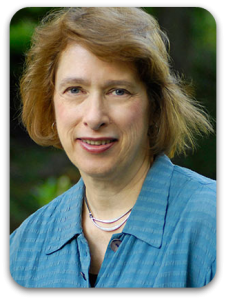 On Tuesday June 10, 2014, I had the opportunity to hear Megan Marshall speak at an intimate gathering for writers. Marshall won the 2014 Pulitzer Prize for Biography for [simpleazon-link asin="054424561X" locale="us"]Margaret Fuller: A New American Life[/simpleazon-link].
During her talk, Marshall shared a number of insights and tips about writing.
On Tuesday June 10, 2014, I had the opportunity to hear Megan Marshall speak at an intimate gathering for writers. Marshall won the 2014 Pulitzer Prize for Biography for [simpleazon-link asin="054424561X" locale="us"]Margaret Fuller: A New American Life[/simpleazon-link].
During her talk, Marshall shared a number of insights and tips about writing.
In this 3 part series, you will discover how Megan Marshall approaches her narratives, handles the task of writing the biography of a person others have explored, and how she found her writing style.
In this post you will learn how Marshall handles the task of writing the biography of a person others have already explored.
Megan Marshall's Approach to Biography
How do you handle the task of writing a biography of a person that others have already explored?
Marshall answered that biographers often find other biographers who are working on the same subject at the same time.
For example, Marshall had wanted to write a biography about Margaret Fuller in the 1970s. She shelved the project when she realized that Charles Capper had just published a 2-volume biography on Fuller. Marshall worked on [simpleazon-link asin="0618711694" locale="us"]The Peabody Sisters[/simpleazon-link] instead. She revived her project in the early 2000s when she realized that people had forgotten about Fuller.
[simpleazon-image align="right" asin="054424561X" locale="us" height="500" src="http://ecx.images-amazon.com/images/I/51Rcw6C-VlL.jpg" width="332"]Marshall started her project by reading Capper's 2-volume biography, which she found too inaccessible for non-academics. This experience prompted Marshall to plan a single volume biography that would appeal to general readers.
As Marshall worked on her book, she discovered that John Matteson was also writing a biography on Fuller. Matteson published his biography a year before Marshall’s came out.
Marshall said it doesn’t matter that multiple biographers are working on the same subject, you will write the book you are destined to write. In her case, Matteson wrote about Fuller’s relationship with her father, not Fuller’s full story.
Marshall says biographers must be confident that they can get at the lives of their subjects in a way that other biographers cannot.
She also acknowledged the advantage that comes from other’s work.
In the case of Margaret Fuller, Marshall spent more time thinking about the nature of biography than in locating sources because she was able to mine the footnotes/endnotes in the other biographies.
Marshall's Margaret Fuller contains new insights and research, but because she did not have to spend as much time on research, Marshall focused her energies on writing a biography that reads like a novel. Margaret Fuller contains characters, tension, episodes, landscapes, cityscapes, and descriptions that you would encounter in a novel, but Marshall did not make up any of her descriptions, characters, or episodes. All of the conversations Marshall presents occurred in Fuller’s letters.
Conclusion
Marshall imparted advice that extends beyond the biography genre.
All historians will encounter other scholars who are working on the same or similar topics.
Rather then guard our facts and sources, we should assist each other in our shared work because in the end we are all destined to write the books and articles we will write. We might even write better books and articles if we share.
 Like biographers, historians must also be confident that we can get our subjects in a way that other historians cannot.
Like biographers, historians must also be confident that we can get our subjects in a way that other historians cannot.
What Do You Think?
What do you think of Marshall's tacit call for more collaboration among scholars?
For more on how Megan Marshall approaches biographies, see Kathleen C. Stone's "The Biographer's Art: A Conversation with Megan Marshall."